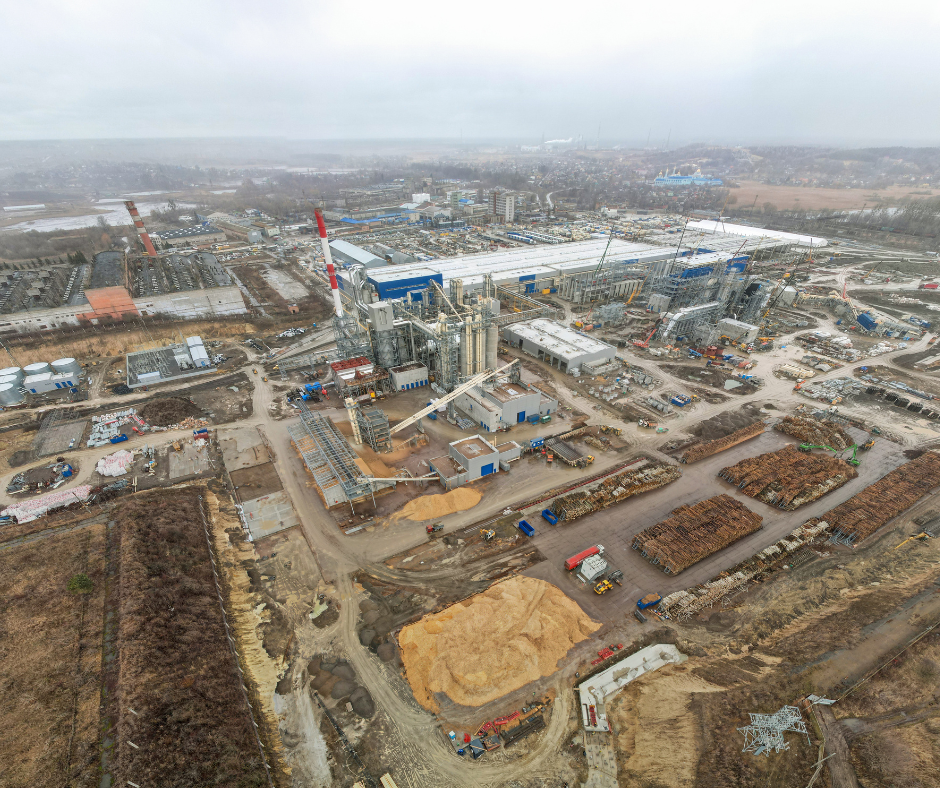The Kronospan Rivne located in Horodok (Rivne region) plans to reconstruct industrial buildings and structures into a wood processing plant. This is mentioned in the published environmental impact assessment (EIA) report.
Ecoclub is concerned about the inaccurate and incomplete information provided in the report. In particular, there are reasonable concerns regarding water consumption, waste generation and management, and the impact of noise pollution. We consider that the plant should revise the information and provide correct calculations. It should also ensure systematic monitoring of environmental impact and inform the public promptly. It is important to ensure that the information contained in the report can influence the decision of the Ministry of Environmental Protection of Ukraine, which issues the EIA conclusion.
What is the problem
The plant had previously developed an EIA report and put it up for public discussion in 2019. At that time, the public commented the report, expressed concerns and protested.
On June 20 this year, the enterprise published a new EIA report: “Reconstruction of the industrial complex of buildings and structures for the wood processing industry”. Ecoclub analyzed the report and found out that some information is incomplete and misleading. Therefore, the EIA conclusion for Kronospan may be formed incorrectly.
What’s wrong with the EIA report: remarks of Ecoclub
The report contains:
– contradictory information on the amount of waste generated during preparatory and construction works. This can lead to incorrect assumptions and underestimation of the environmental impact of construction;
– unreliable information on noise pollution during preparatory and construction works. The analysis of noise was carried out at a distance of 300 meters from the source of emissions, and the operations will take place throughout the entire territory of the enterprise. The closest residential buildings are located fifty meters to the north and two hundred meters to the south of the enterprise;
– incommensurable information about the number of employees who will be involved in the construction. In particular, the number of employees at the 3rd stage of construction (according to Table 1.6 of the Report, the number of employees is 82 people, and according to Table 1.22 – 70 people).
The report also does not contain
– a detailed description of the environmental impact of the alternatives. This makes it difficult to assess which of the alternatives will be more (un)safe for the environment and the health of local residents;
– sufficient estimates of waste generation during construction. Thus, it is impossible to assess the impact of waste management during preparatory and construction works (which is a violation of paragraphs 1 and 5 of part two of Article 6 of the Law of Ukraine “On Environmental Impact Assessment”).
“According to the law, announcements about the start of public discussions should be published on the official websites of the environmental departments of regional administrations. We noticed that as of July 21, the information had not yet been published on the websites of the department and the Horodok Village Council. Whether this indicates a failure to comply with the law is a rhetorical question,” says Yulia Kvitka, project coordinator at the NGO Ecoclub.
What does the Ecoclub require
To prevent possible negative consequences, the plant should revise its water consumption and waste generation calculations. It should also ensure systematic and open monitoring of environmental impact.
If Kronospan receives a positive conclusion, we demand to:
– carry out preparatory and construction work at a distance of no closer than 300 meters to the sanitary protection zone;
– carry out quarterly monitoring of quantitative and qualitative indicators of air pollutants at the border of the sanitary protection zone and the nearest residential buildings;
– carry out quarterly monitoring (microbiological, physical and chemical) of the water quality in the Ustia at the control points of water sampling, and publish the results of the monitoring;
– monitor the impact of noise on a monthly basis during preparatory and construction works and on a quarterly basis during operation on the border of the sanitary protection zone and on the border of residential development;
– monitor the quality of water discharged by conducting physicochemical analysis of water (monthly) and toxicity level (semi-annually) according to sanitary norms and regulations;
– monitor the efficiency of dust and gas treatment plants (monthly);
– make the results of all the above observations and monitoring publicly available promptly;
– ensure promptly inspection of the technical condition and efficiency of pollutant emission treatment plants and to draw up relevant acts;
– ensure uninterrupted efficient operation, safe operation of dust and gas cleaning equipment, maintain facilities and equipment for emission treatment in good condition;
– maintain the emission treatment equipment in good working order, to carry out regular monitoring of the efficiency of gas treatment plants;
– take measures to restore the normal technological process in cases of exceeding the level of any pollutant.
Read the full version of comments on the EIA report (Ukrainian only).
The article was published within the framework of the Initiative for the Development of Environmental Policy and Advocacy in Ukraine, implemented by the International Renaissance Foundation with the financial support of Sweden. Opinions, conclusions or recommendations are those of the authors of this document and do not necessarily reflect the views of the Government of Sweden. The content of this document is the sole responsibility of the NGO “Ecoclub”.












